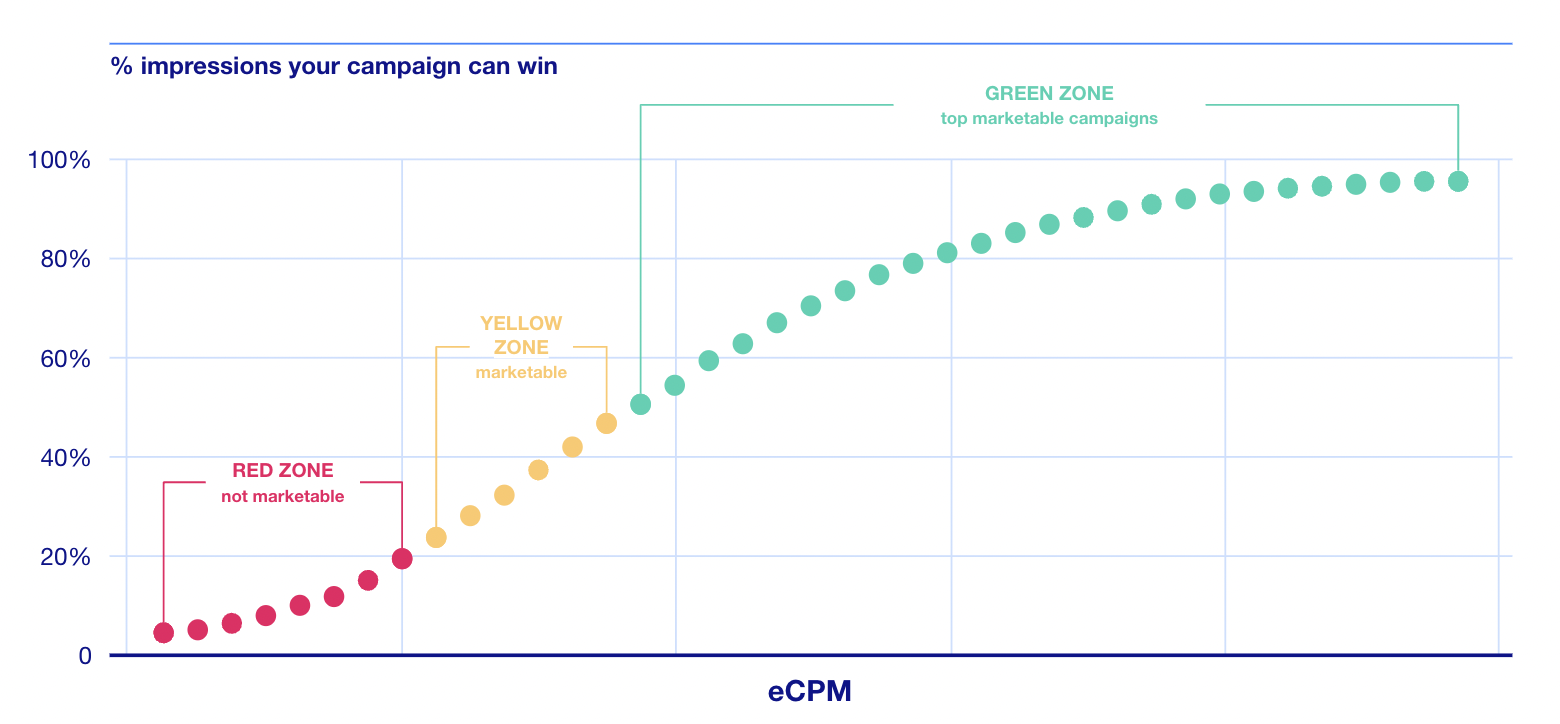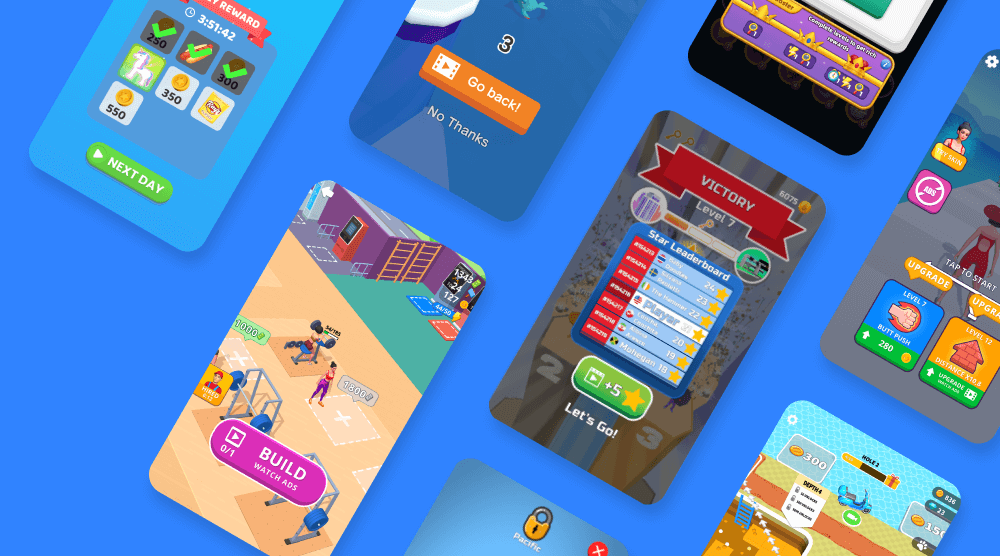At this year’s Mobidictum Business Conference, Lior Shekel, Director of Strategic Partnerships at ironSource, walked through 5 steps to launch a hit hyper-casual game today - including tips for marketability testing, soft launching, and global launching. Let’s dive in.
Step 1: Run a marketability test on social networks
The first step to launching a hyper-casual game is running an initial marketability test on social media networks - this tells you its relative potential for success in the market. Facebook is typically the best place to start - it has a simple integration, it’s relatively fast and cheap to use, and offers a vast audience. Essentially, testing on Facebook gives you a general idea whether your game prototype matches your KPI goals.
If test results on Facebook look promising, try marketability testing on other social networks like Google, Snapchat and TikTok. This will give you even broader confirmation that your game stands out among the competition.
Step 2: Run a marketability test on SDK networks
Once initial KPIs are looking good, now it’s time to test on SDK networks. Why? SDK networks offer the biggest audience possible, and the biggest opportunity for your game to scale up during the global launch. Just because a game passes marketability on Facebook, doesn’t necessarily mean it will scale on an SDK network later on.
To understand marketability on SDK networks, we look at eCPM, which is IPM multiplied by CPI. Like the chart shows, the campaigns that generate the highest eCPMs will be the ones to top the SDK networks’ data science ad serving models, winning the most impressions and scaling the fastest. Essentially, the higher the eCPM, the more the purchasing power your campaign has on the network.

Step 3: Implement ad monetization
Once your game’s KPIs look promising on both social media and SDK networks, you’re almost ready for launch. But first, you need to maximize your monetization opportunities through the game content itself. This includes adding more levels, A/B testing different placement and creative strategies, determining a basic game economy, and more.
This way, before launch, you’re putting yourself in the best position to profit from your game, while ensuring your users have the most positive and exciting experience possible.
Step 4: Run a soft launch
Now it’s time to soft launch your game - releasing the product ahead of the scheduled launch is an opportunity to simulate real-world interactions. Since you’ve already tested your marketability, you can confidently soft launch on every ad network possible to increase your buying power.
Some hyper-casual studios choose to initially soft launch on social networks, then later on SDKs - but we see that the most successful cases soft launch everywhere at once. Let’s dive into two different soft launch strategies.
Going all in
The first strategy, the “all-in” launch, focuses on scaling up quickly to find the profitable and scalable sweet spot. It starts with a higher-than-average bid (we recommend around 20% higher), giving you a higher eCPM, as we mentioned earlier (remember CPI, or bid, is a factor of eCPM). By spending extra money, you’re increasing your eCPM - so you can scale quickly and top the charts, but your profit KPIs will drop as a result. To retain your revenue, we recommend capping this campaign at $500-1000 daily.
Next, you lower your bid each day by no more than 10% - increasing the budget cap simultaneously. This process usually takes around 3 days, helping you reach your sweet spot when you can start granular bidding - carefully setting and adjusting different bids according to their source behavior. You should bid per source based on the quality that it’s generating for you, such as increasing bids in sources with a good ROAS.
Staying conservative
Conversely, a conservative launch is much more stable - but because it prioritizes profit, it scales much more slowly. With this strategy, you start with your target bid, which means your budget will likely be smaller, but will soon grow. At this stage, it’s crucial to prevent your game from reaching its budget cap - it harms the game’s positive trend and growth potential.
To start granular bidding within 4-5 days, you should also be monitoring ROAS from day 1.

Comparing four games that used one of these two strategies - every single one hit the top charts, with games using the “all-in” strategy staying there for a slightly longer time. Most importantly, despite the strategy, the games’ total revenue was virtually the same at the end of the day.
Staying ahead of the curve
No matter which soft launch strategy you use, we recommend first launching in the US - it’s the biggest market offering the highest bids and eCPMs. From there, we recommend waiting 2-3 days before launching globally. To get maximum scale from your top sources, it’s best to optimize based on ROAS source bidding. Eventually, you can go on “auto-pilot” mode by turning on automated ROAS optimizer campaigns within each ad network - reducing workload for the whole team.
As you global launch, keep these tips in mind:
- Timing is everything - launch close to the weekend for longer retention and more playtime
- Utilize your top-performing creatives and test new creatives - this improves IPM, which therefore boosts eCPM (eCPM = IPM x eCPI)
- Call your users to action using different interactive and playable end cards to increase IPM
Step 5: Automate and scale up
Congrats! You’ve now global launched your game, new users are joining every day, and LTV is becoming much more accurate. Now is the best time to automate user acquisition, so you and your team can not only focus on acquiring the users, but also the game itself - and you can buy users much more efficiently.
Not only does automation free your time, but it also uses highly accurate data - many ROAS optimizers today bid on an extremely granular level, for example per user and per ad request. This expands your reach because you can adjust your bids all the time, while your optimizer continues to optimize to scale and profit.
By launching your hyper-casual game in a thoughtful way, you’re ensuring it’s on the best path for success - from the earliest marketability testing stages, all the way through post launch and automation.




